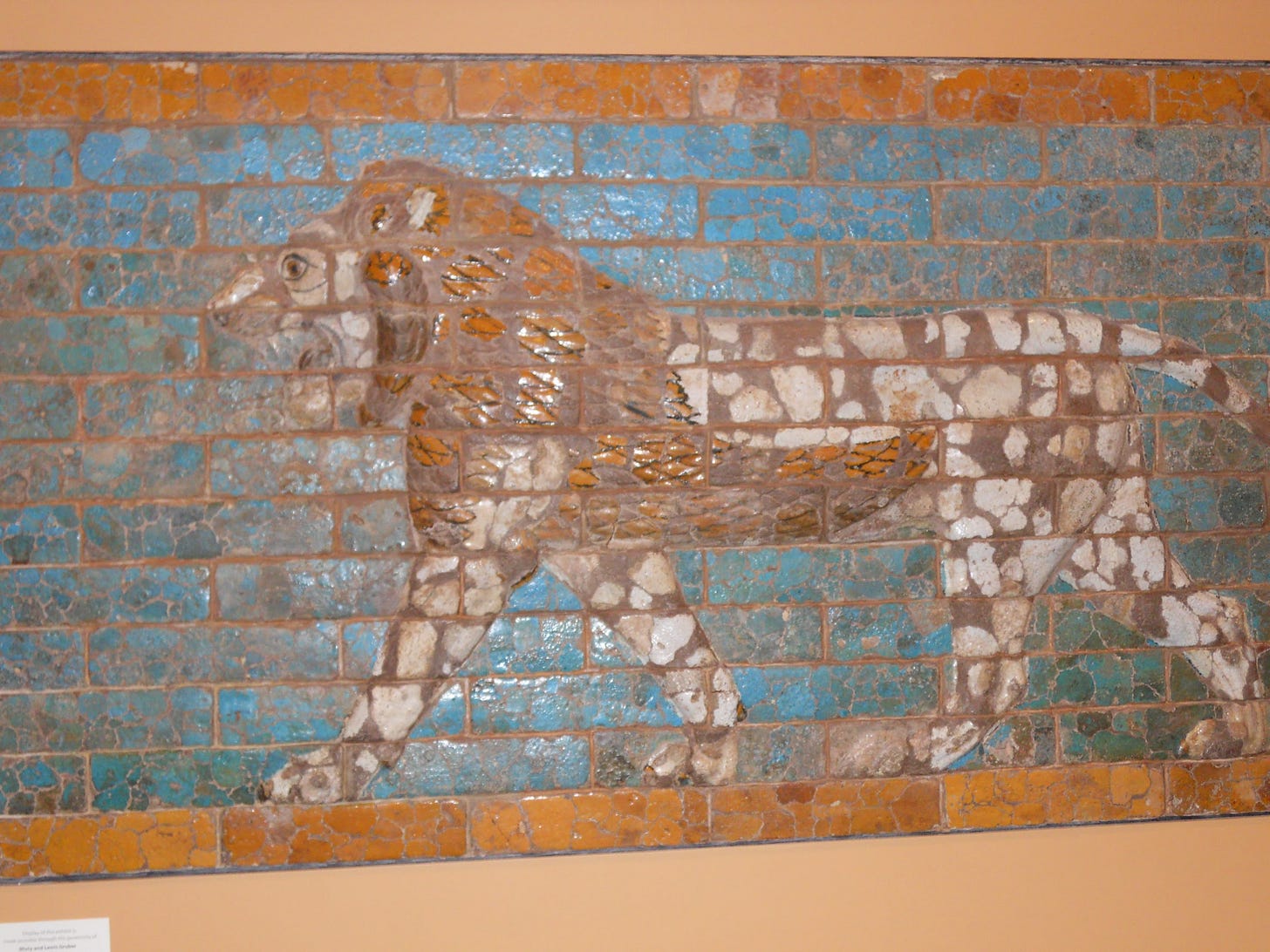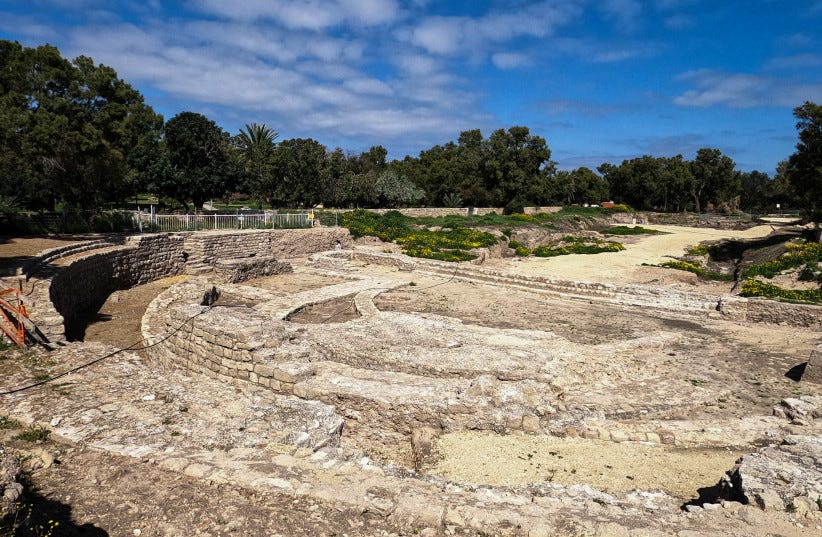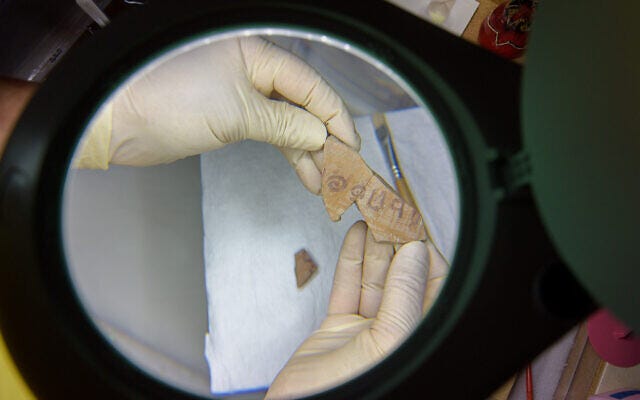Monthly Digest - September 2021
Issue 5
From the Editor
Hot off the presses, here we have the September Issue or I should say, Issue 5 of Digging Up The Past. As we end the summer season, we see exciting announcements of discoveries from newly excavated ancient Christian and submerged settlements, Roman basilicas in the Holy Land, ancient inscriptions bearing Biblical names to even the discovery of the body of a Roman Priest at Pompeii. And now that school is back in session, we are starting to see more lectures and events. Expect to see more of these in upcoming newsletters. So, grab your pickaxe and trowel, it is time for us to go digging!
Quote of the Month
What it lies in our power to do, it lies in our power not to do. - Aristotle
In the News…
An Ancient Christian Settlement Discovered in Egypt
Archaeologists from the University of Warsaw announced the discovery of a previously unknown Christian settlement in Egypt known as ancient Marea. Located 25 miles southwest of Alexandria, it was built in the 3rd century BCE.
The 32-acre Christian precinct was discovered using new, non-invasive archaeological techniques, which were able to study a greater area of the site than traditional excavation allows. It also represents one of the very few residential areas constructed in the later years of the Byzantine empire and the only such settlement that was left unfortified. Only a hundred years after the construction of Christian Marea, however, all of Egypt was conquered by Muslim forces (c. 639–646 C.E.), though Marea survived for another century before its final abandonment in the eighth century.
Read more at the Biblical Archaeology Society.
The Remains of a Roman Priest Have Been Discovered in Pompeii
The Smithsonian Magazine reports the discovery of the exceptionally well-preserved remains of an ancient Roman priest in Pompeii. Marcus Venerius Secundio is believed to have died in his 60s and decades before the eruption of Mount Vesuvius in 79 CE.
The skeleton shows signs of partial mummification, suggesting Secundio may have been embalmed before his burial, reports Reuters’ Crispian Balmer. Ancient Romans used certain textiles to preserve corpses, and scholars found scraps of what appear to be fabric in the tomb.
2,000 Year Old Roman basilica unearthed in Ashkelon
First discovered in the 1920’s, the remains of a 2,000 year old Roman basilica is finally being excavated in Israel.
The remains of a magnificent Roman basilica, the largest in Israel, have been uncovered in Ashkelon in an excavation conducted by the Antiquities Authority (IAA) within a development project of the Tel Ashkelon National Park and will soon be accessible to the public, the Israel Nature and Parks Authority (INPA) announced on Monday.
[ … ]
“The basilica was first discovered in the 1920s by British archaeologist John Garstang who led an expedition on behalf of the Palestinian Exploration Fund and then covered the structure once again,” said Dr. Rachel Bar Nathan, IAA director of excavation together with Saar Ganor and Federico Kobrin.
Read more at the Jerusalem Post.
6,000 Year Old Island Settlement Discovered off of Croatian Coast
Reuters reports that while examining satellite images of Croatia’s coastline, archaeologist Mate Parica spotted something unusual:
“I thought: maybe it is natural, maybe not,” said Parica, a professor at the University of Zadar.
The image showed a large, shallow area on the seabed jutting out from the eastern shore of the island of Korcula.
Parica and a colleague decided to dive at the site and discovered what they believe is a Neolithic settlement from around 4,500 years BC, built on a small piece of land that was connected to the main island by a narrow strip.
6,000 Year Old Wine Discovered in Greece
According to the Department of History and Archaeology of the Aristotle University of Thessaloniki, Europe’s oldest wine was discovered in ancient Philippi in northern Greece.
The University presented research that indicates that making and drinking wine in Europe originates from prehistoric Greece.
Thousands of ancient grape seeds and pomace were found in ancient Philippi house whose contents were preserved in a fire that occurred in 4300 B.C.
More information can be found at The Greek Reporter.
A 3,100 Year Old Inked Inscription May Be the Name of a Biblical Judge
Excavations conducted in the Judean foothills have uncovered an 1,100 BCE jug inscribed with the name Jerubbaal; the same name of a Biblical Judge found in the Book of Judges.
The painted pottery is dated by the archaeologists to 1,100 BCE, which would make it prior to the formation of the biblical monarchy. The inscription was written in Early Alphabetic/Canaanite script, evidence of which has been found throughout Egypt and the Levant. First finds including paleo-Hebrew script come much later, dating to the 9th century BCE.
Read more at The Times of Israel.
Featured Publications
Roman Mythology: A Traveler's Guide from Troy to Tivoli
By David Stuttard
The perfect guide to Roman myths and the landscapes and ideas that shaped them―for both the actual and armchair traveler.
All roads lead to Rome, as the famous saying goes. Rome was a melting pot of peoples from across the Mediterranean and beyond, each bringing their own myths and legends of heroes and heroines, gods and goddesses. Roman myths formed the backdrop to the rituals and customs of everyday life, from the way aristocrats dressed up for a banquet to the bloodthirsty audiences thrilled to watch criminals forced to enact the roles of mythological characters.
Exhibits
Ramses the Great and the Gold of the Pharaohs
The Houston Museum of Natural Science
Transport back 3,200 years, across the sands of the Sahara Desert where you reach the heartbeat of Ancient Egypt ruled by the most celebrated builder in the country’s storied history. Experience one of the greatest collections of its kind in the world premiere exhibition, Ramses the Great and the Gold of the Pharaohs!
This all-new multisensory museum experience provides guests with a window into the life and accomplishments of Ramses II, more commonly known as Ramses the Great. You will come face-to-face with 181 priceless artifacts including Egyptian treasures and one-of-a-kind relics, many representing the exceptional pharaoh himself. On this immersive journey you’ll uncover a stunningly preserved collection of artifacts, including sarcophagi, animal mummies, magnificent jewelry, spectacular royal masks, exquisite amulets, and ornate golden treasures of the tomb, showcasing the superb workmanship of Egyptian artists.
Resources
Courses
A View from the Conquered: Lower Nubia During the Egyptian New Kingdom
Join Egyptologist Lindsey Weglarz for a 7 week Zoom-based online class (Thursdays at 7 - 9 PM CST, September 30 - November 4) as she explores the ancient land of Nubia.
Around 1550 BCE, Egypt conquered its southern neighbor, Nubia, and integrated the region into its growing empire. After this conquest, there were significant changes in the material culture of Lower Nubia, the region from the First to the Second Cataract. Archaeological remains paint a picture of rapid adoption of Egyptian material culture, architecture, and iconography. But was this truly the case? Or was the reality of life in Lower Nubia under Egyptian rule more complicated? This course explores Lower Nubia during the Egyptian occupation, focusing on the response of native groups to their integration into a wide-ranging Egyptian colonial empire. We will discuss changes among the Nubian elites and the archaeology of the middle and lower classes during this time, with a focus on the supposed "Egyptianization" of the Lower Nubian population.
Upcoming Events
The Rise of the Maccabees:What Archaeology Reveals About Antiquity’s Last Independent Jewish Kingdom
In her presentation, [Andrea] Berlin examines the complicated rise of this still poorly understood Jewish kingdom that arose amid complicated geopolitics in the centuries following the death of Alexander the Great. It is commonly thought, based on 1 Maccabees, that Judah Maccabee founded the Hasmonean state around 160 B.C.E., thanks to the heroic resistance movement he had started. Yet on the ground, these years were long considered invisible. Few sites or archaeological materials were thought to date to this period.
The event will take place on Wednesday, December 1 at 8-9 PM Eastern Time. Register to view the online lecture here.
Human Origins - The Narratives of Our Creation Conference 2021
On November 20-21, Ancient Origins is hosting their 4th annual conference, this time centered around the many ancient narratives of Human Origins. Watch many scholars, including yours truly speak about the many things that would have influenced and inspired the ancients as they attempted to find answers to the age old question: Why are we here?
The 4th Ancient Origins Conference is happening! Join us on the weekend of November 20-21, 2021 for Human Origins - The Narratives of Our Creation.
A team of leading authors, experts, and researchers will lead you on a journey around the world to investigate the creation beliefs of ancient cultures - and address the controversies surrounding these accounts.
OI Armchair Travelers: Iraq
On Wednesday, September 22 at 7 PM CST, join Jean Evans (deputy director and chief curator of the Oriental Institute of the University of Chicago) as we explore the ancient Sumero-Babylonian sites of Iraq. Register for the online Zoom event here.
Has Iraq been on your travel bucket list? Join OI deputy director and chief curator Jean Evans as she guides you through a virtual tour of this fascinating and diverse country. In 2019, Jean traveled with the OI to reopen excavations at Nippur, providing her the rare opportunity to explore the country’s natural beauty, as well as several important sites of ancient Mesopotamia.
Tours
The 14-day Royal Egypt Tour with Dr. Zahi Hawass
Explore the wonders of the ancient Egyptian civilization including the enormous Karnak and Abu Simbel temples, the tombs in the Valley of the Kings, and much more! The Royal Tour offers private entrances to the entire Giza pyramid complex and the Luxor Temple outside of opening hours. Only with us will you stand between the paws of the Great Sphinx and gain exclusive access to the places closed to the public! Thanks to special permission granted by the Minister of Antiquities, you will see the Tombs of the Pyramid Builders in Giza, an active excavation site.
To view more details, visit the Archaeological Paths website.
Artifact of the Month

Ordered by the Neo-Babylonian King, Nebuchadnezzar II to be built at around 575 BCE, the Ishtar Gate, whose grand brick walls, glazed mostly in blue depicted animals (both real and mythological) and deities. It stood at the North side of the citadel and would have struck fear to those enslaved from battle, as they walked through it.









